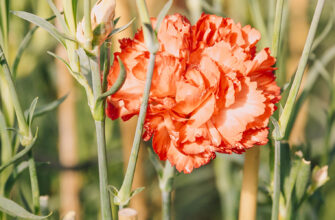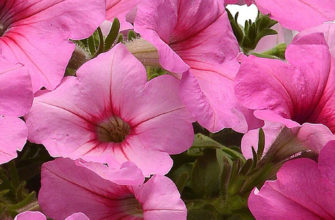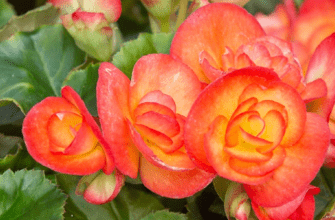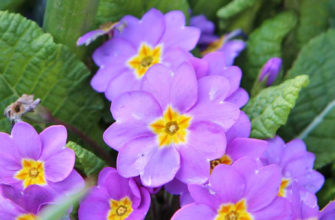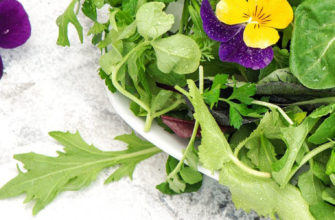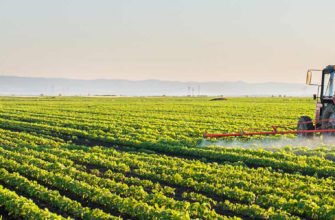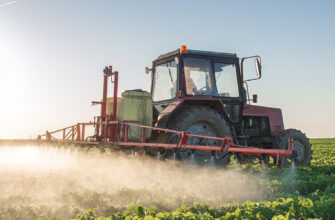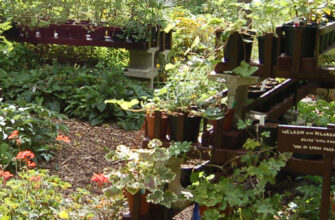Carnations (Dianthus, family Caryophyllaceae) are fragrant perennial flowers with fringed petals, ideal for carnation cultivation in flower beds, carnation container gardening, and as cut flowers.
Renowned for their diverse carnation varieties and low maintenance, they are a favorite among gardeners and florists. This dianthus planting guide describes the main types of Dianthus, their characteristics, leading countries for carnation gardening, and regions producing carnation seed germination materials.
- Turkish or Bearded Carnation (Dianthus barbatus)
- Chinese Carnation (Dianthus chinensis)
- Garden or Dutch Carnation (Dianthus caryophyllus)
- Chabaud Carnation (Dianthus caryophyllus ‘Chabaud’)
- Feather Carnation (Dianthus plumarius)
- Maiden Pink (Dianthus deltoides)
- Field Carnation (Dianthus campestris)
- Alpine Carnation (Dianthus alpinus)
- Global Cultivation and Seed Production Trends
Turkish or Bearded Carnation (Dianthus barbatus)
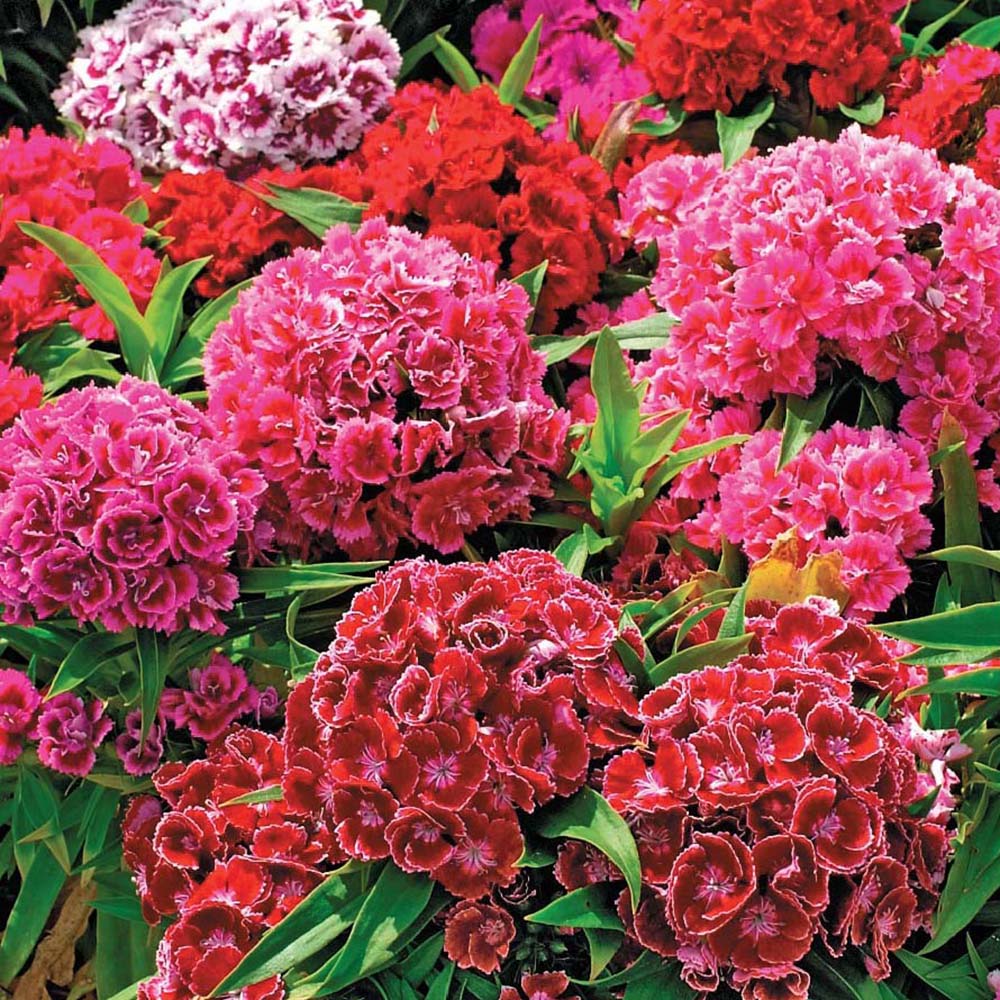
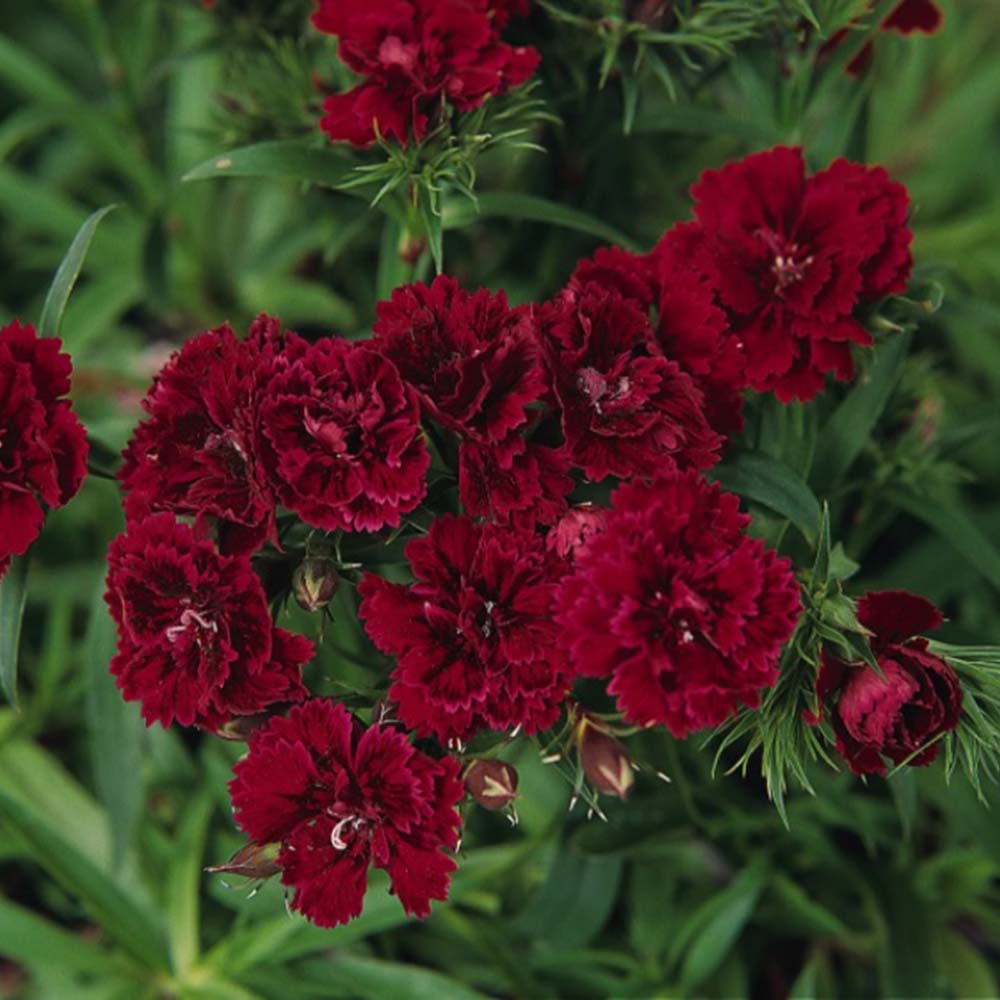
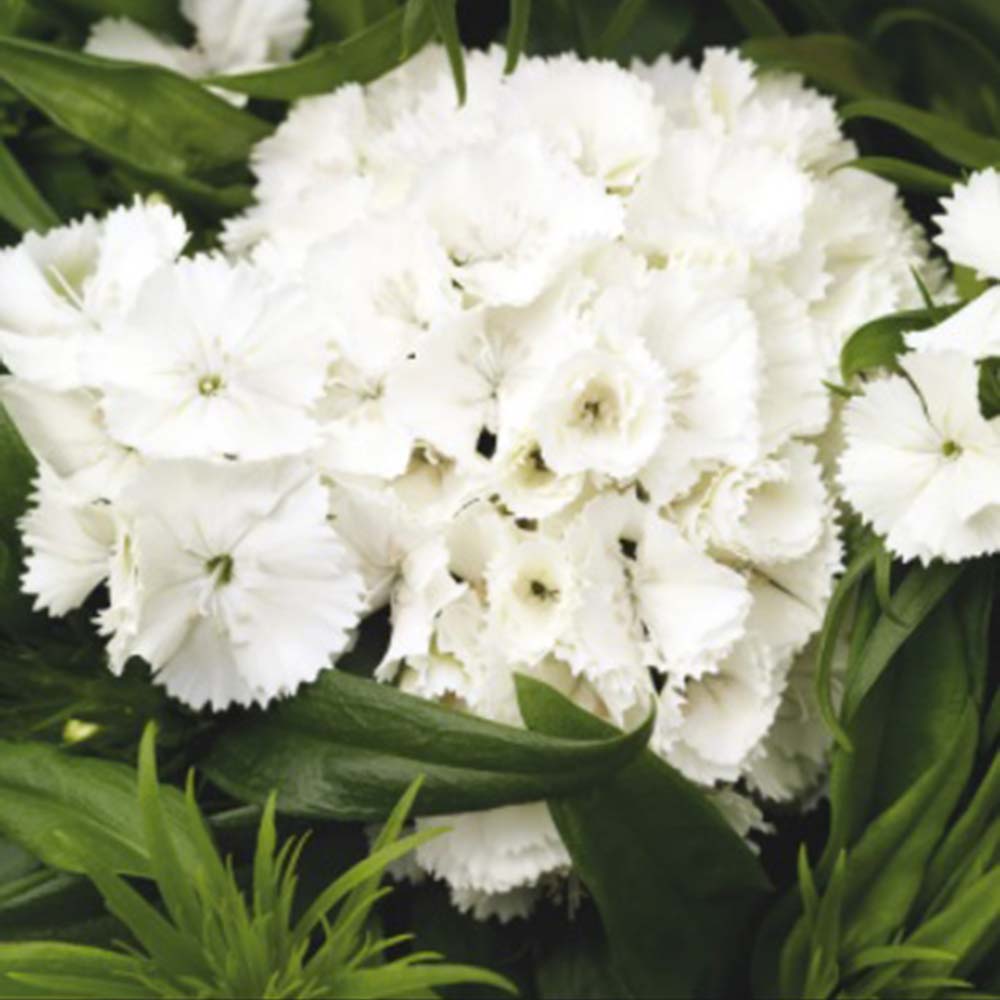
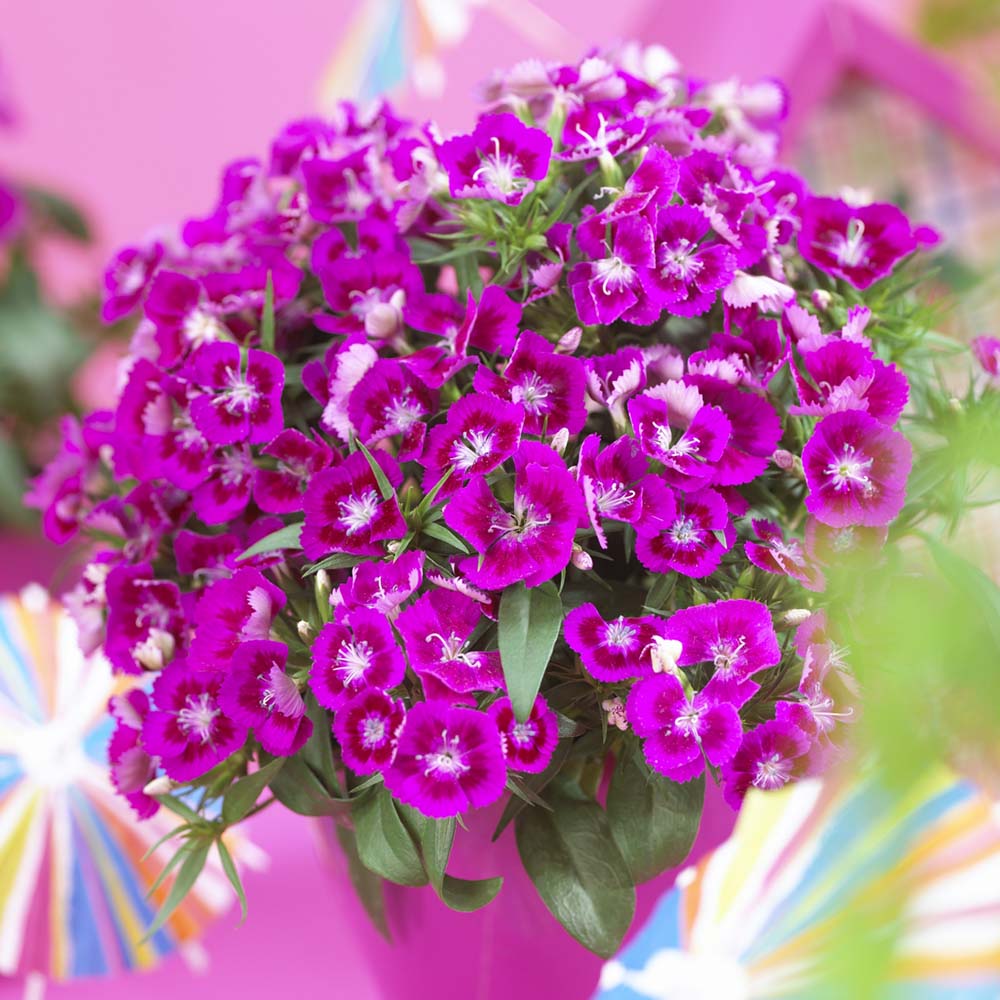
The Turkish carnation is a popular choice for turkish carnation growing, often cultivated as a biennial despite being a perennial in the wild. Native to riverbanks, forests, meadows, and mountains of Southern Europe (e.g., Croatia, Greece, Italy), it is used for cut flowers, carnation gardening in borders, and landscaping flower beds.
- Characteristics: Stems reach 30–75 cm, with elongated, pointed, green or glaucous leaves. Inflorescences feature numerous fragrant flowers, 1.5–3 cm in diameter. Petals are white, red, pink, or beige, often with patterns. Blooming occurs in the second year, lasting 4–6 weeks (June–July) as part of how to grow carnations.
- Countries of Cultivation: Widely grown in temperate climates, including the Netherlands (a leader in commercial carnation cultivation), Italy, France, Ukraine (southern regions), Turkey, and the United States (notably California). Popular in Central and Eastern European carnation gardening.
- Seed Production: Major producers of carnation seed germination materials include the Netherlands, Germany, the United States (e.g., Burpee, PanAmerican Seed), and Japan, specializing in hybrids for ornamental dianthus companion plants and garden designs.
Chinese Carnation (Dianthus chinensis)
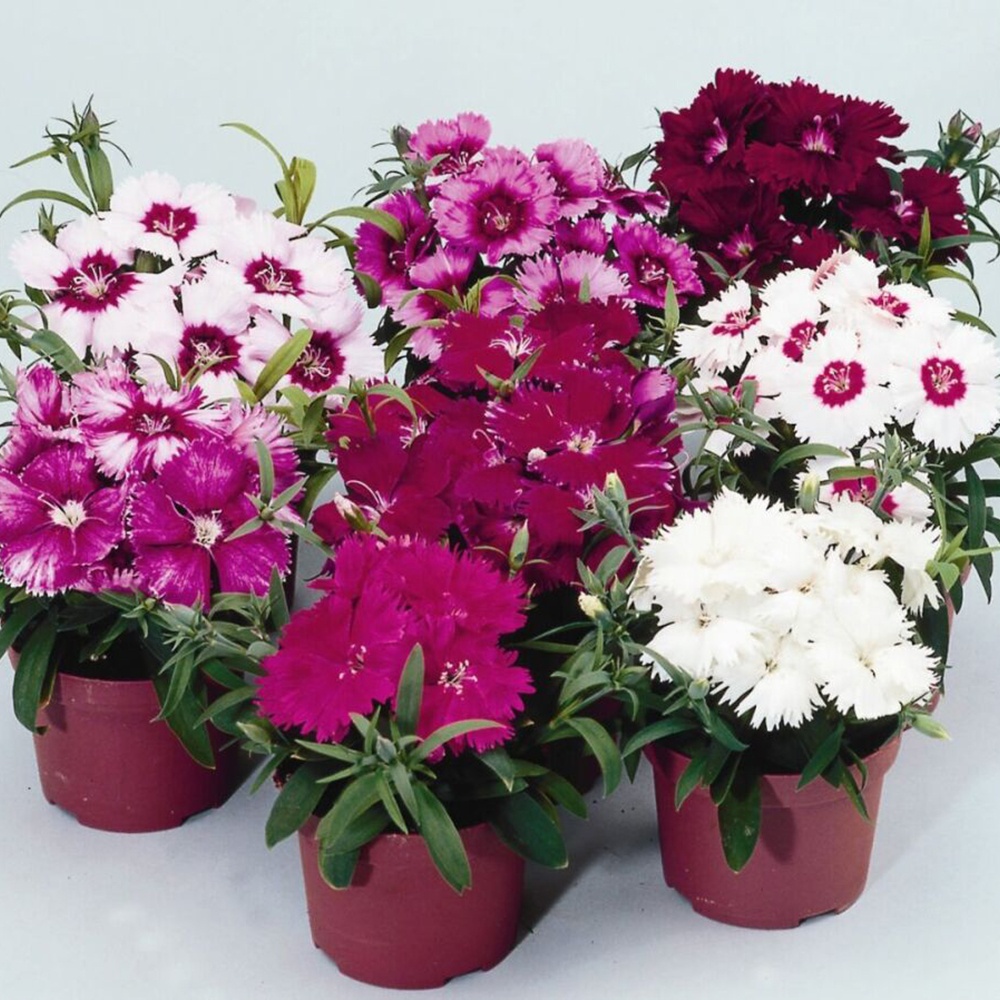
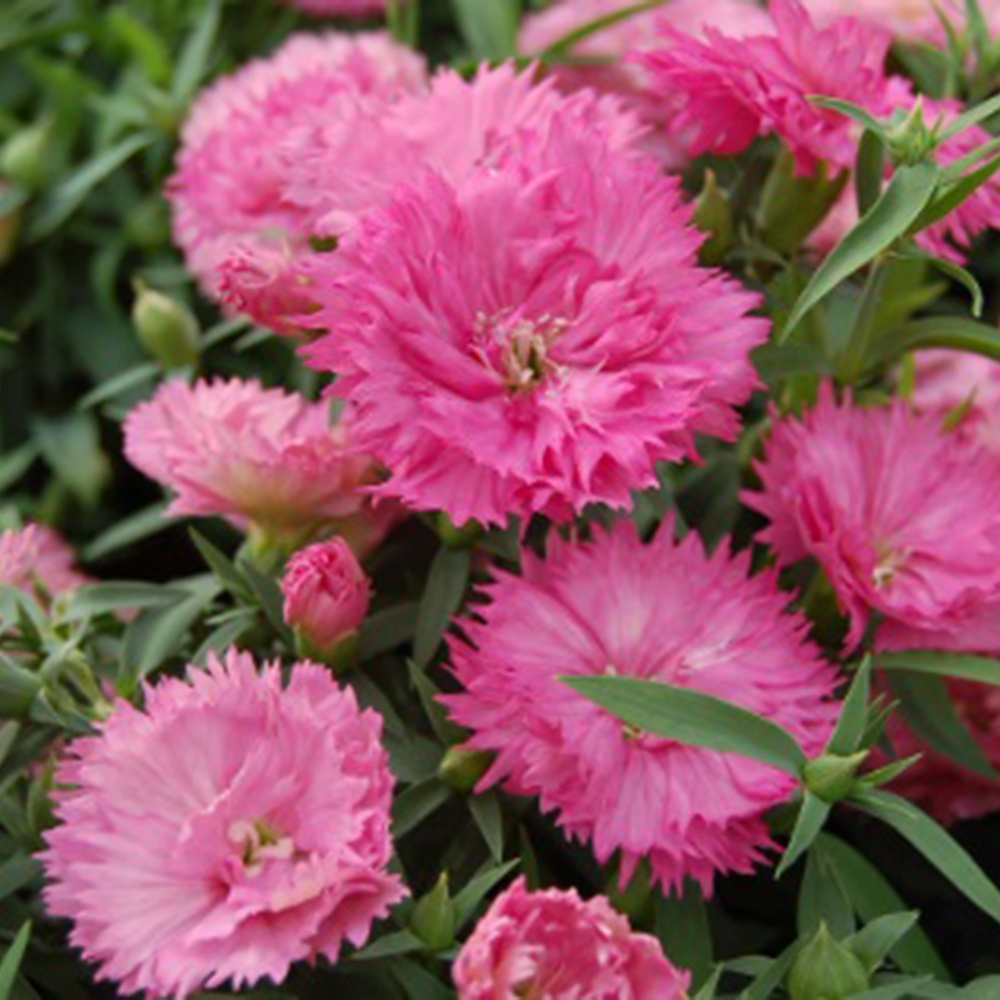
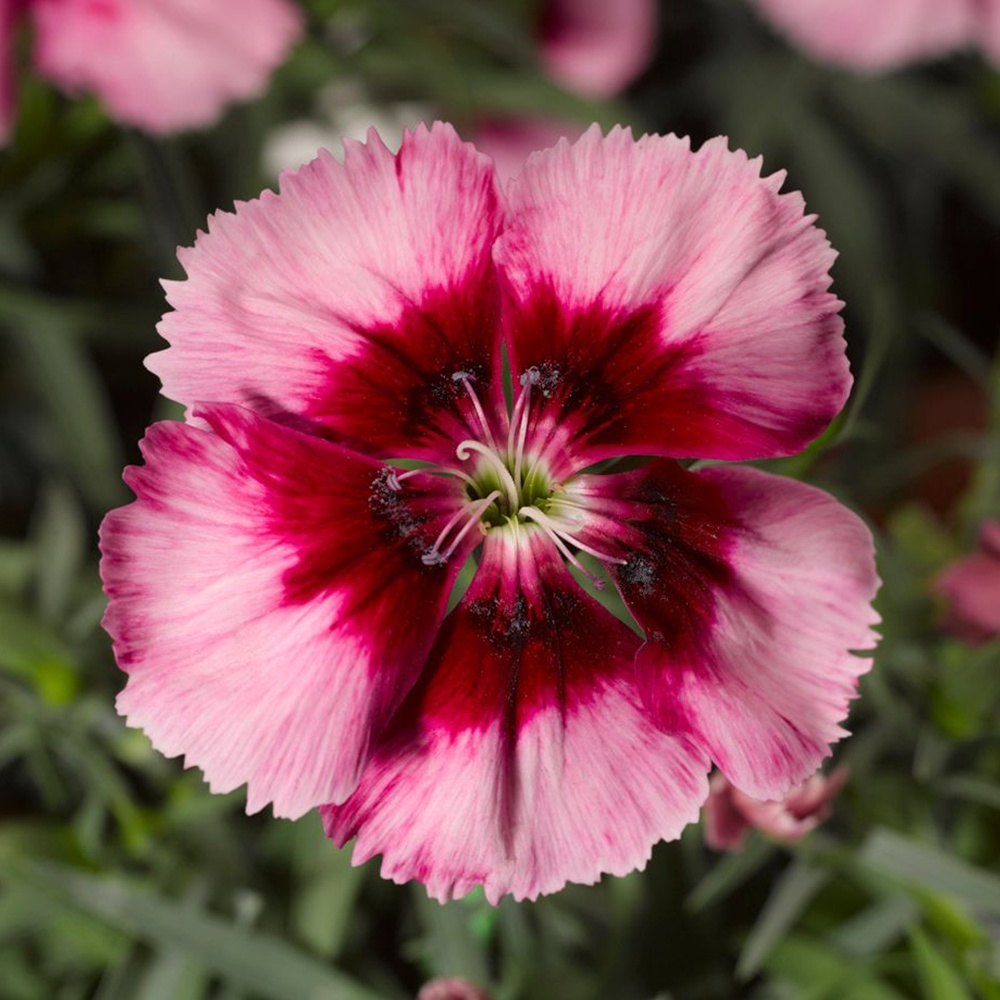
This perennial, often grown as an annual, is ideal for beginners due to its low-maintenance chinese carnation care. Thriving in partial shade or full sun, it suits early planting and pairs well with low-growing flowers in carnation gardening.
- Characteristics: Plants grow 15–50 cm, with elongated, curled-tipped leaves. Flowers bloom from July until frost, with single or bicolor petals (burgundy, pink, white) featuring thin burgundy stripes, 2–4 cm in diameter. Proper carnation soil requirements include well-drained soil for optimal growth.
- Countries of Cultivation: Commonly cultivated in China (its native region), Japan, South Korea, the United States (for carnation container gardening), Germany, and Poland. In Ukraine, it is popular in private gardens and balconies.
- Seed Production: Leading suppliers for carnation seed germination include China, the Netherlands, the United States, and the United Kingdom (e.g., Thompson & Morgan). China excels in large-scale hybrid production.
Garden or Dutch Carnation (Dianthus caryophyllus)
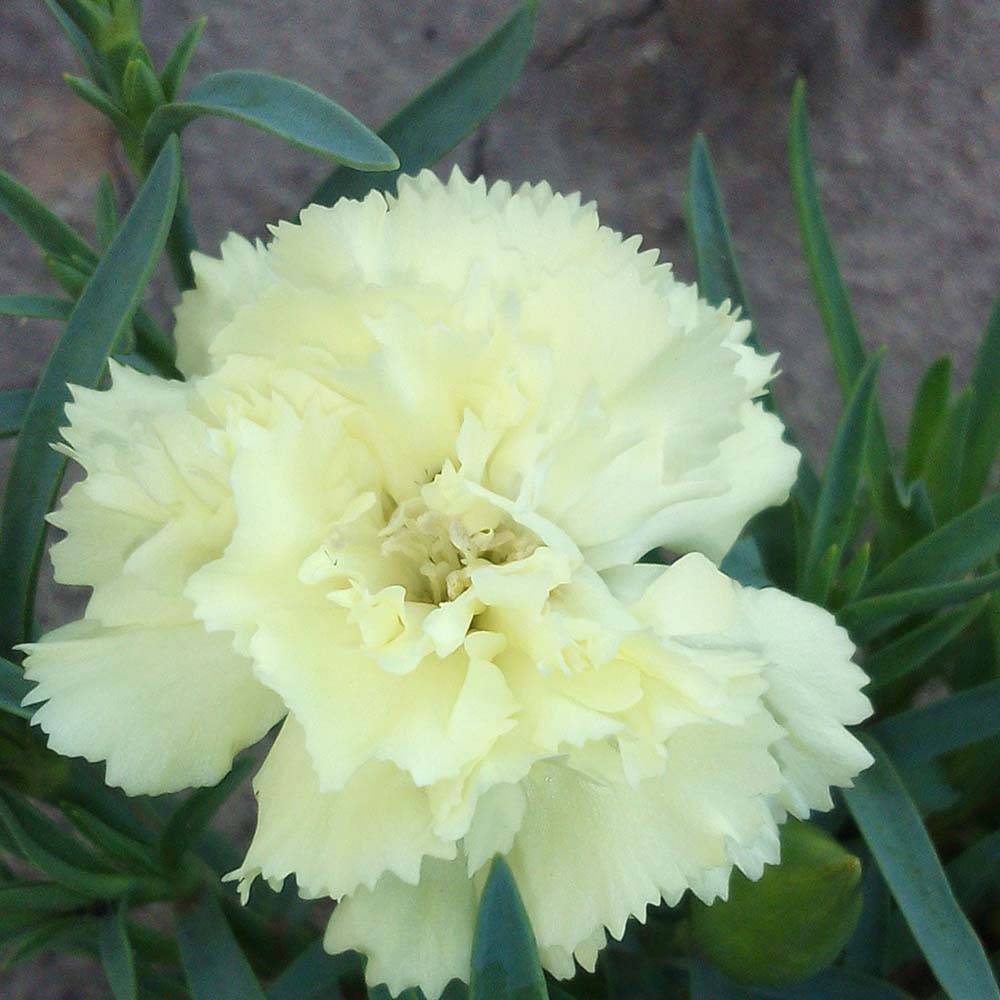
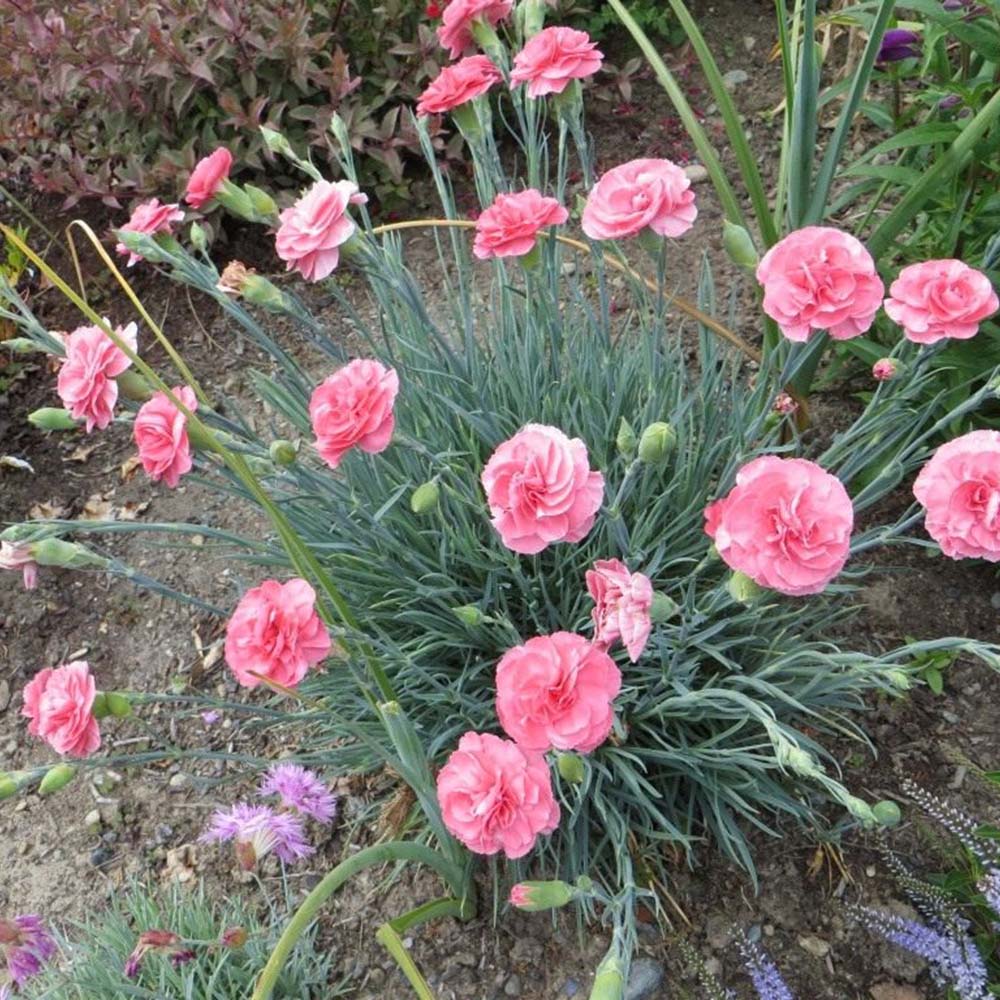
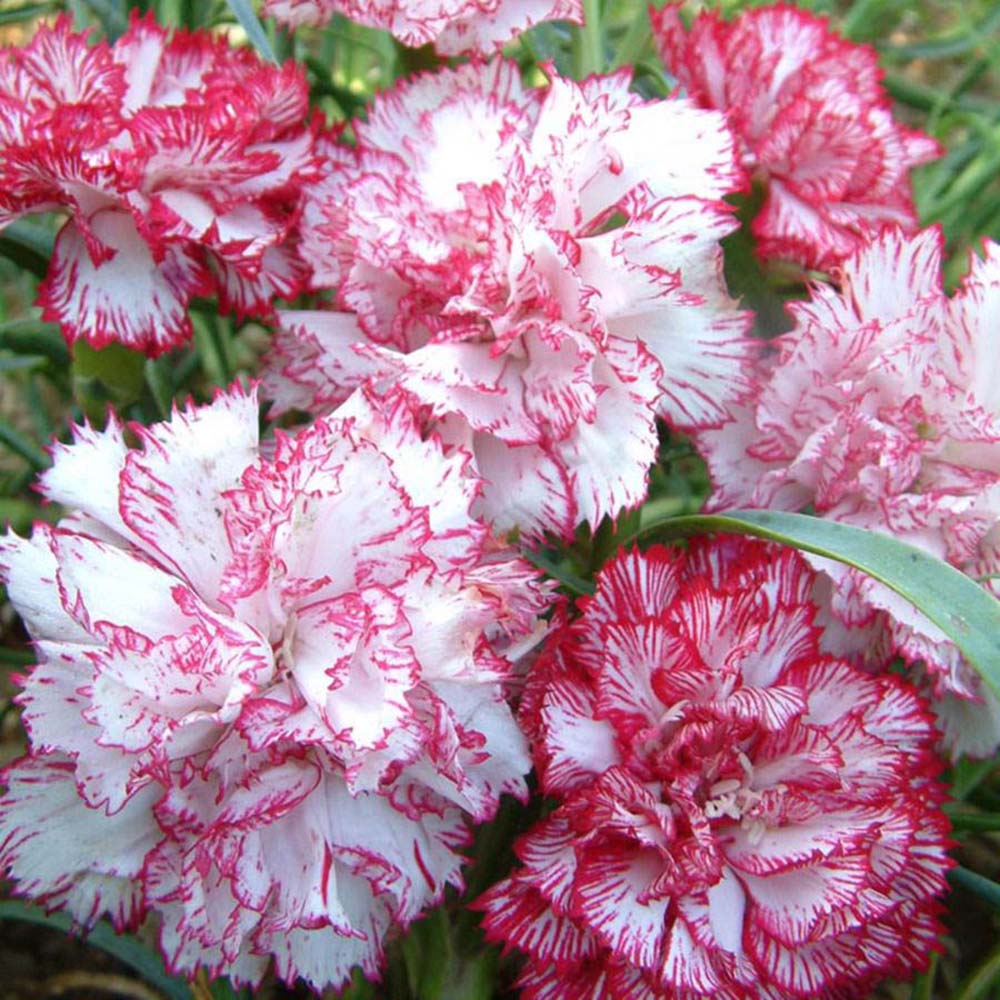
The most widespread species, derived from crossbreeding, is a staple in dutch carnation cultivation. Grown in greenhouses for cut flowers and in gardens for landscaping, it includes tall (for cutting), medium-height, and low-growing carnation varieties for flower beds and borders.
- Characteristics: Tall varieties reach 60–80 cm, with elongated, dark green leaves. Fragrant flowers, up to 7 cm, range from white to purple, with single or double blooms, solitary or in dense inflorescences. Prefers mild, humid climates and specific carnation soil requirements (pH 6.0–7.0).
- Countries of Cultivation: Leading producers include the Netherlands (a hub for carnation greenhouse growing), Colombia (a major cut flower exporter), Ecuador, Kenya, Spain, and Ukraine (southern regions). In the United States, it thrives in California and Florida.
- Seed Production: Seeds are produced in the Netherlands, United States, France, and India. Companies like Syngenta Flowers and Sakata Seed develop hybrids for commercial carnation cultivation.
Chabaud Carnation (Dianthus caryophyllus ‘Chabaud’)
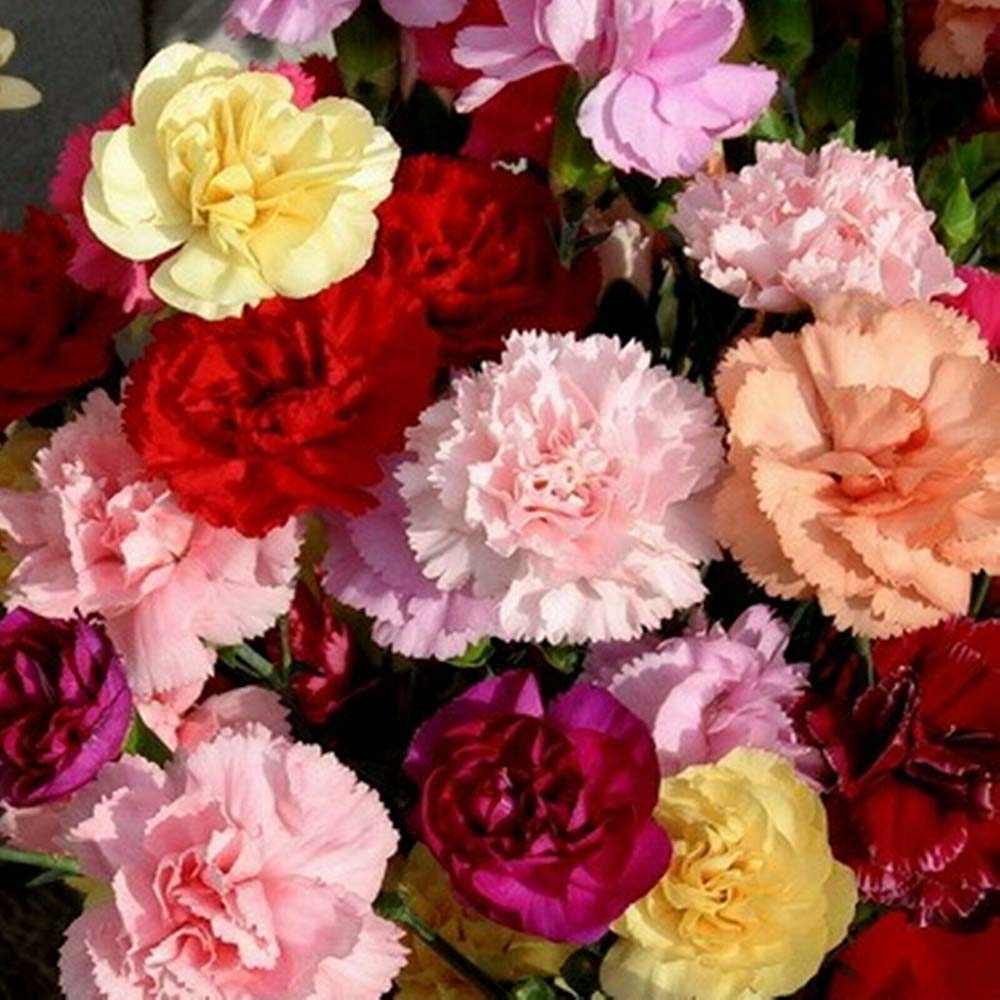
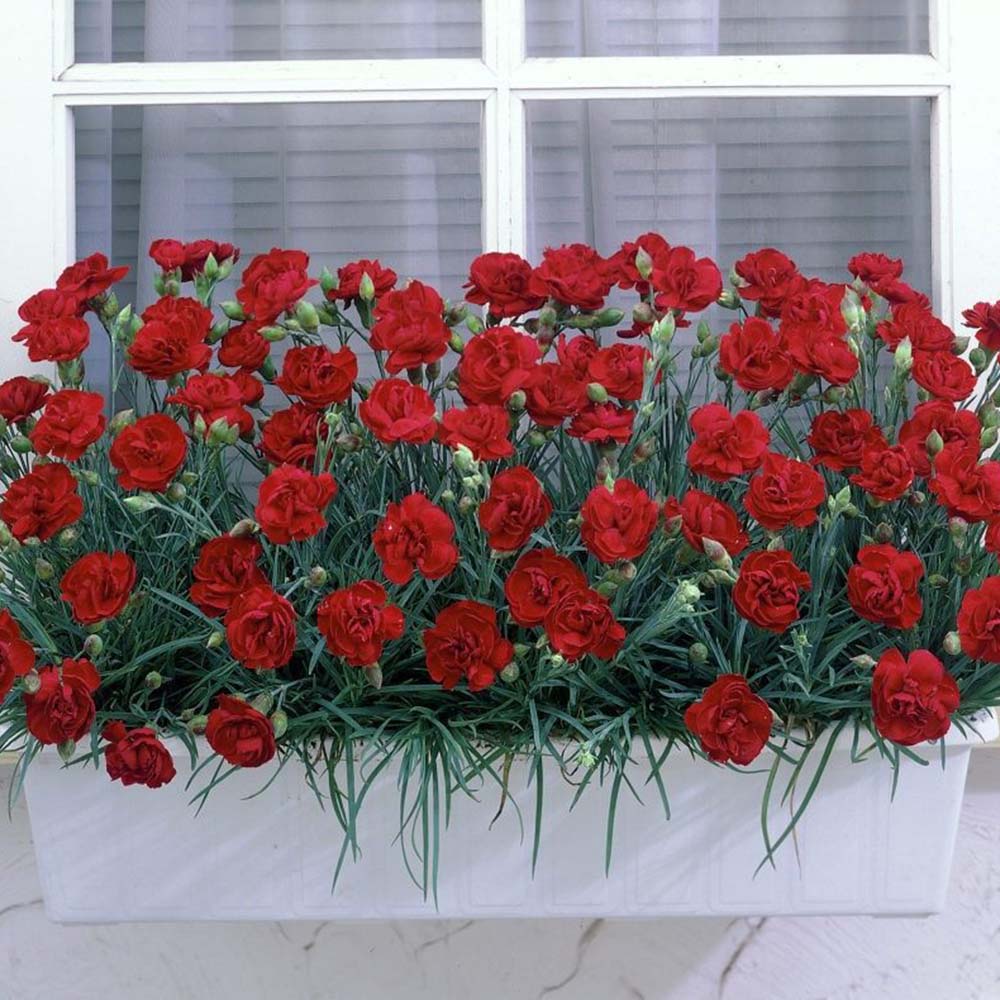
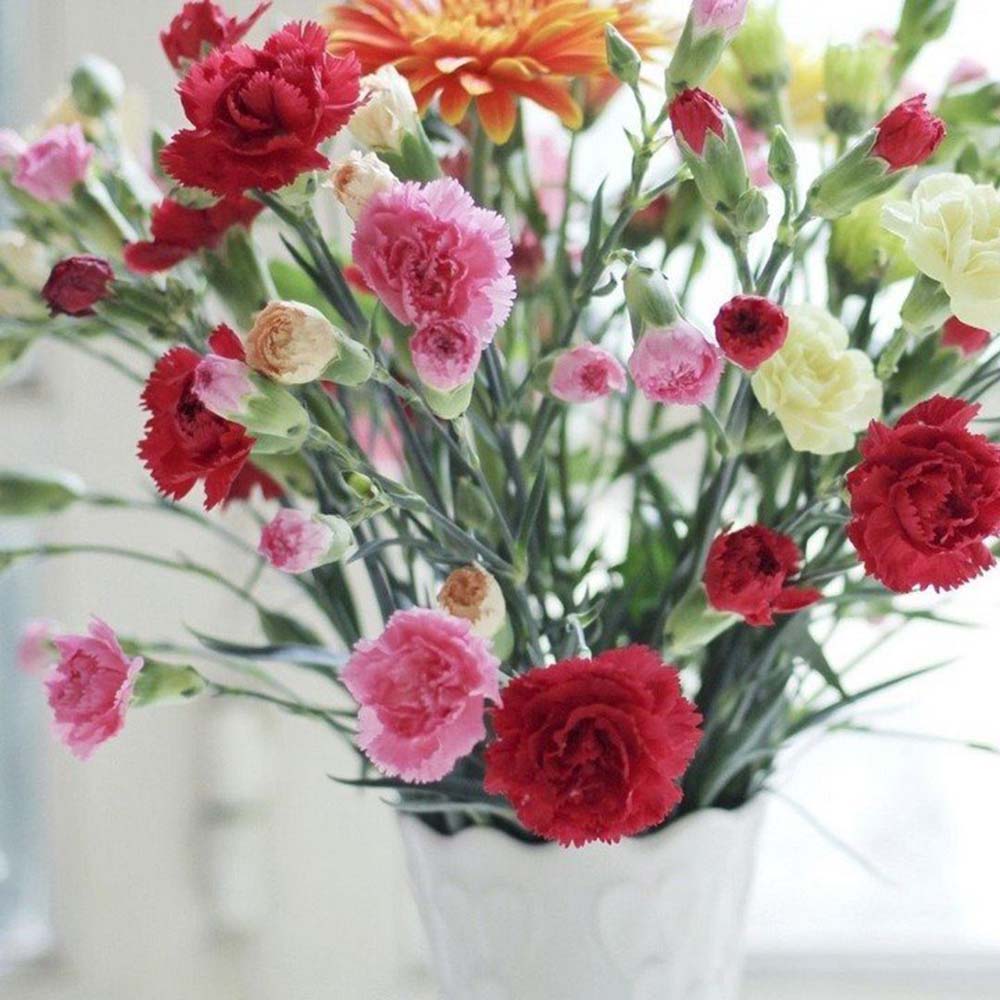
A subtype of the garden carnation, this heat-loving perennial is often grown as an annual in chabaud carnation growing. It can overwinter in temperate climates with protection and is ideal for cut flowers and carnation container gardening on balconies and terraces.
- Characteristics: Plants reach 30–70 cm, with gray-green, linear leaves (4–12 cm). Flowers (4–7 cm) are single, double, semi-double, fringed, or deeply cut, ranging from white to deep red. Blooms from July until frost. Pink petals may fade in bright sunlight, requiring careful carnation care.
- Countries of Cultivation: Popular in France (where it was developed), the Netherlands, Italy, Ukraine (southern regions), Japan, and Australia. Used in carnation greenhouse growing and balcony displays.
- Seed Production: Major producers include France, the Netherlands, and the United States. Hybrids are supplied by companies like PanAmerican Seed and Benary.
Feather Carnation (Dianthus plumarius)
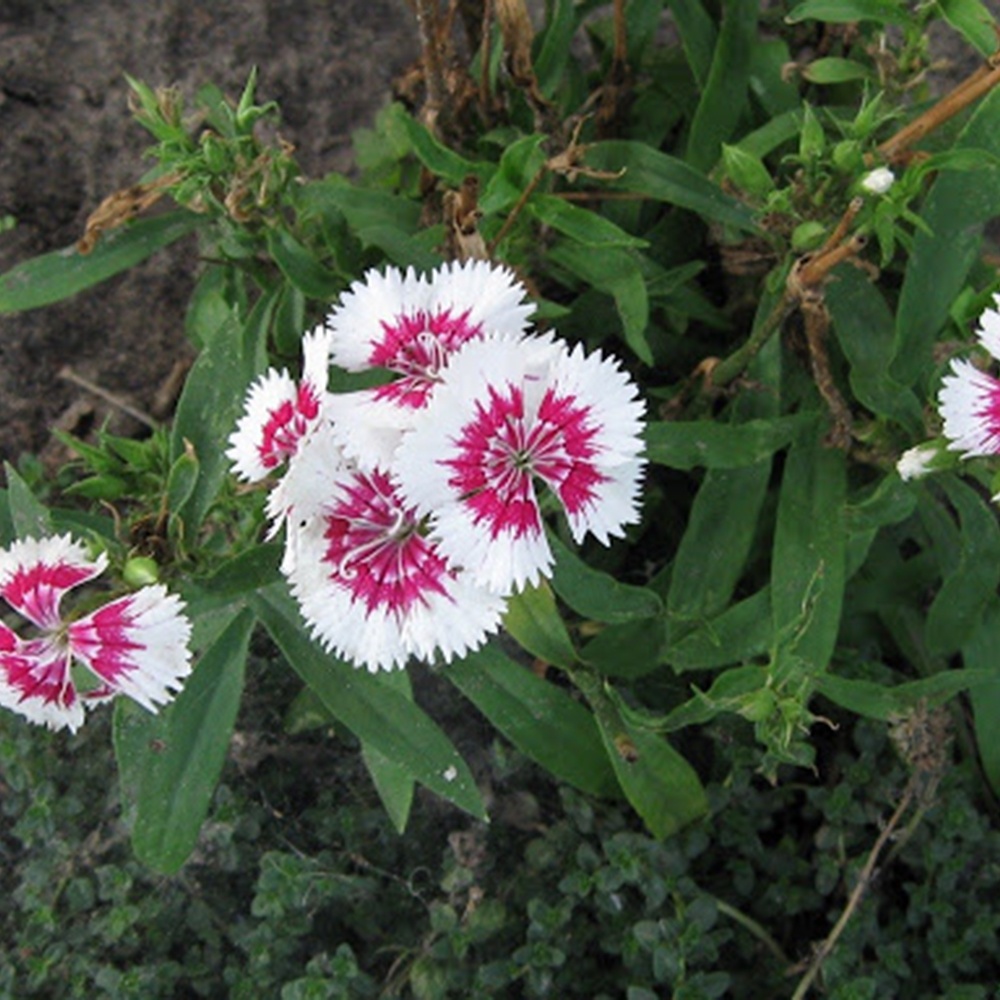
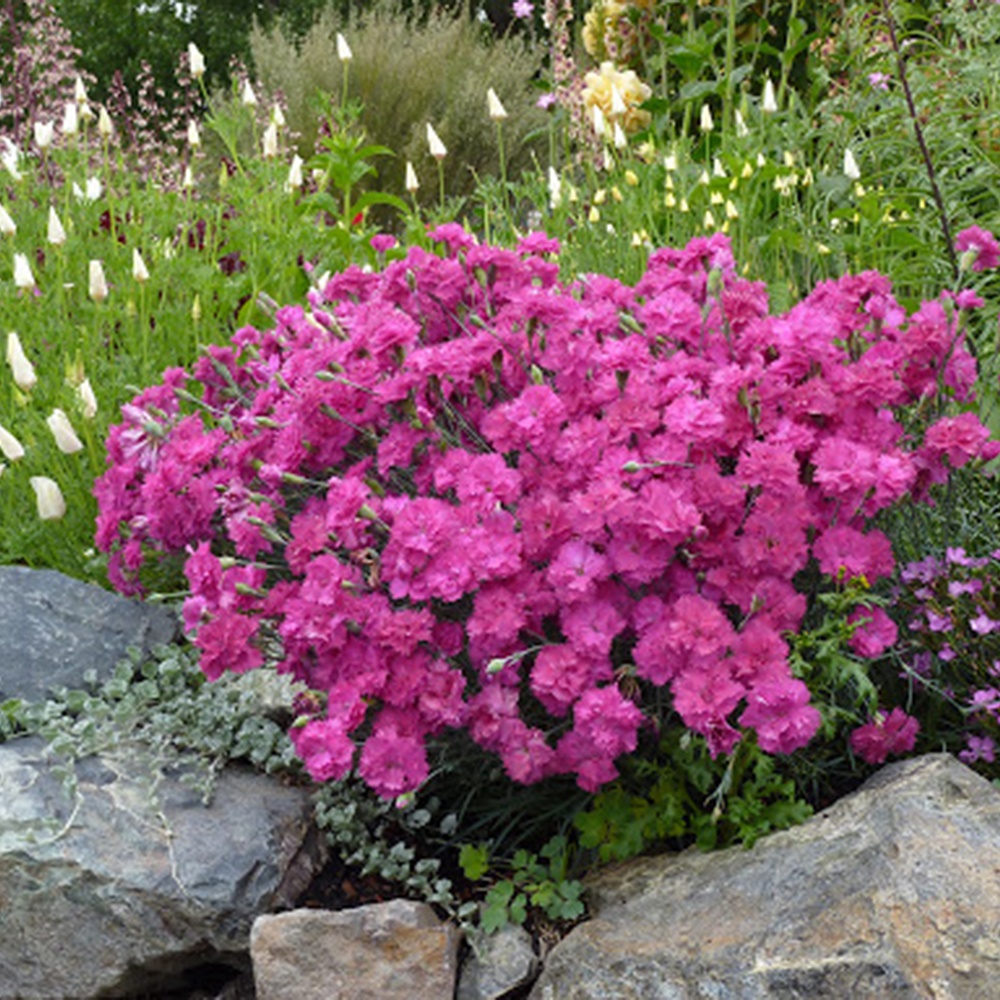
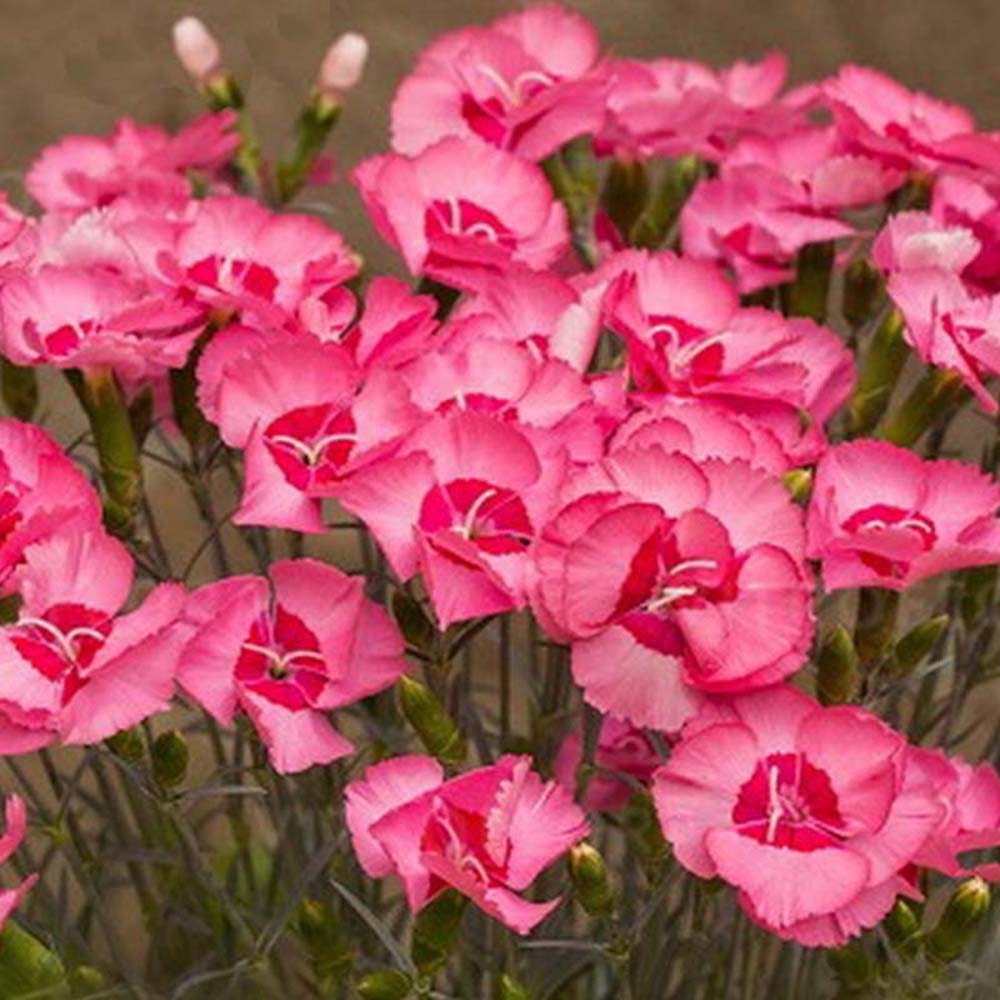
A low-maintenance perennial from Eastern Europe (Poland, Hungary, Czech Republic), valued for its strong fragrance and ability to grow in one location for years, making it a favorite in feather carnation varieties.
- Characteristics: Plants reach 30–40 cm, with straight stems and lanceolate leaves. Flowers are grouped in umbels, with white or pink petals featuring central patterns, 2–3 cm in diameter. Blooms in the second year for about a month (June–July) as part of how to propagate dianthus.
- Countries of Cultivation: Common in Poland, Germany, Ukraine, the United Kingdom, and the United States. Used in gardens and rockeries with dianthus companion plants.
- Seed Production: Seeds are produced in Germany, the Netherlands, the United Kingdom, and the United States. Suppliers like Jelitto Seeds and Chiltern Seeds specialize in carnation seed germination.
Maiden Pink (Dianthus deltoides)
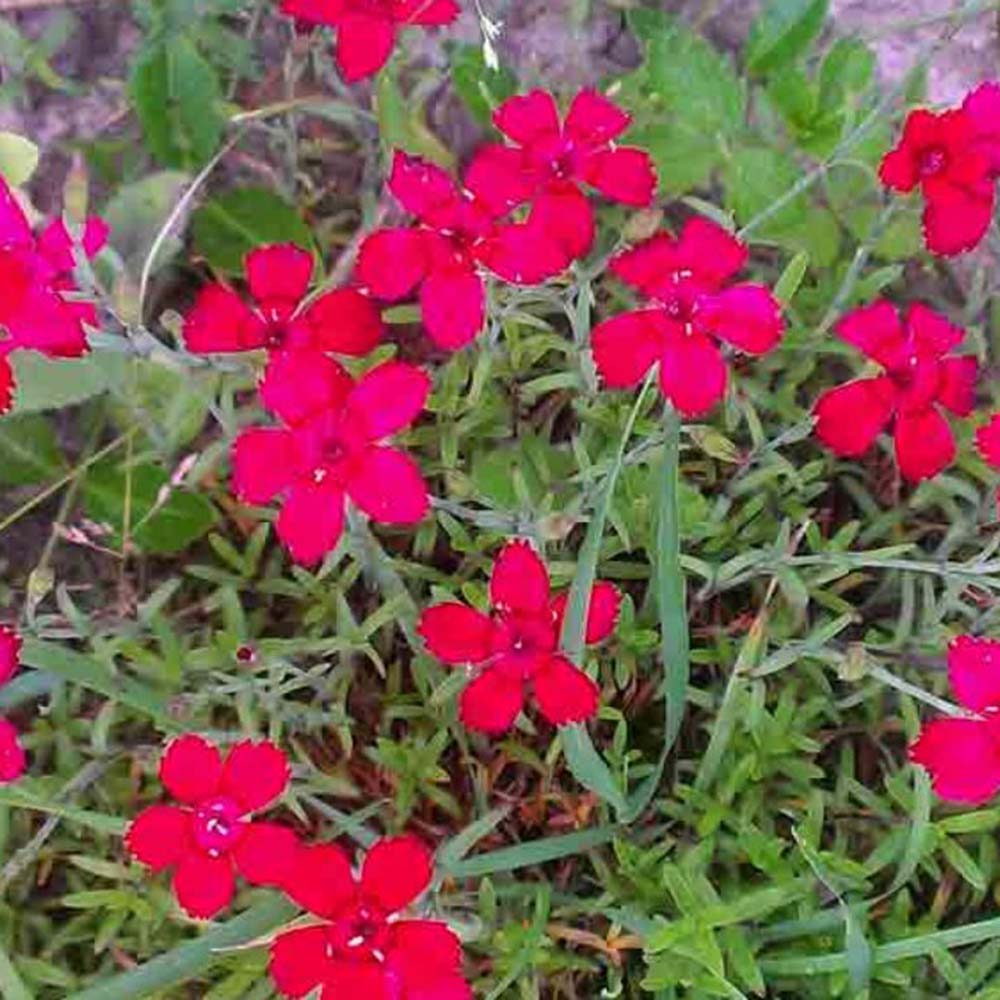
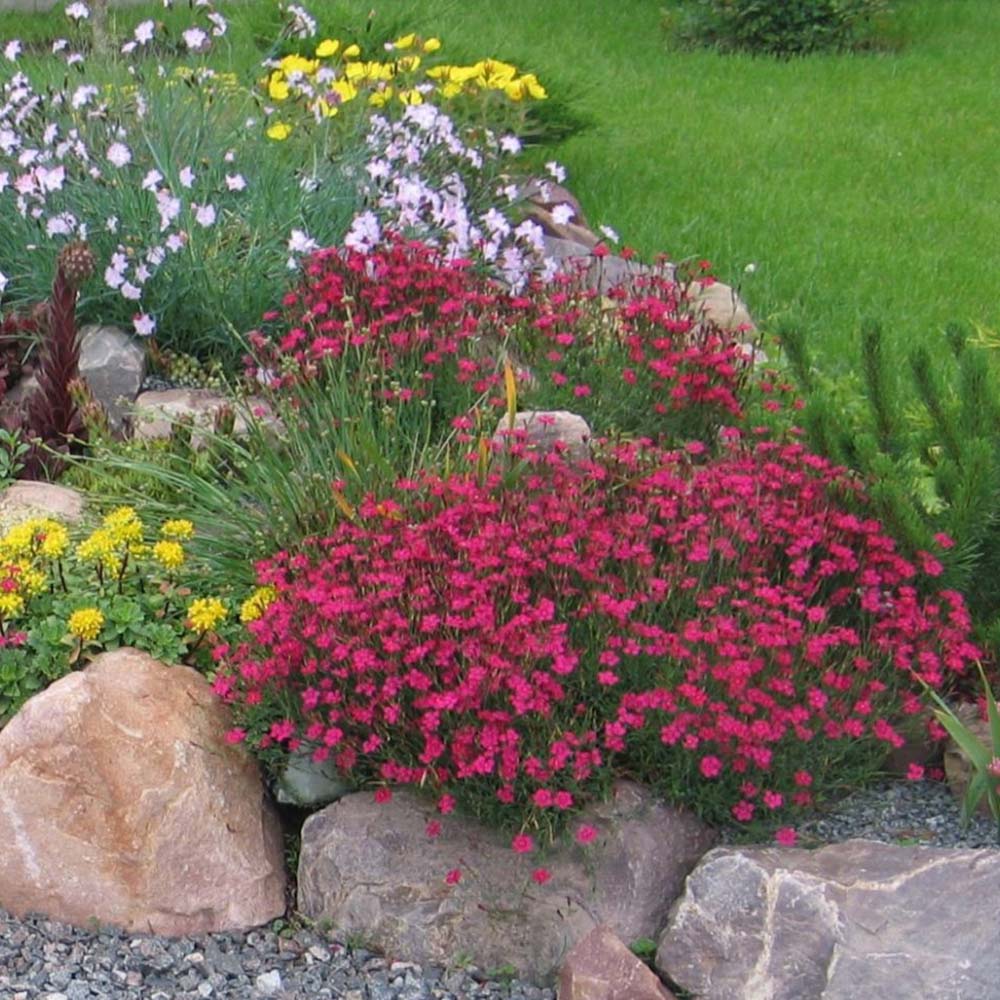
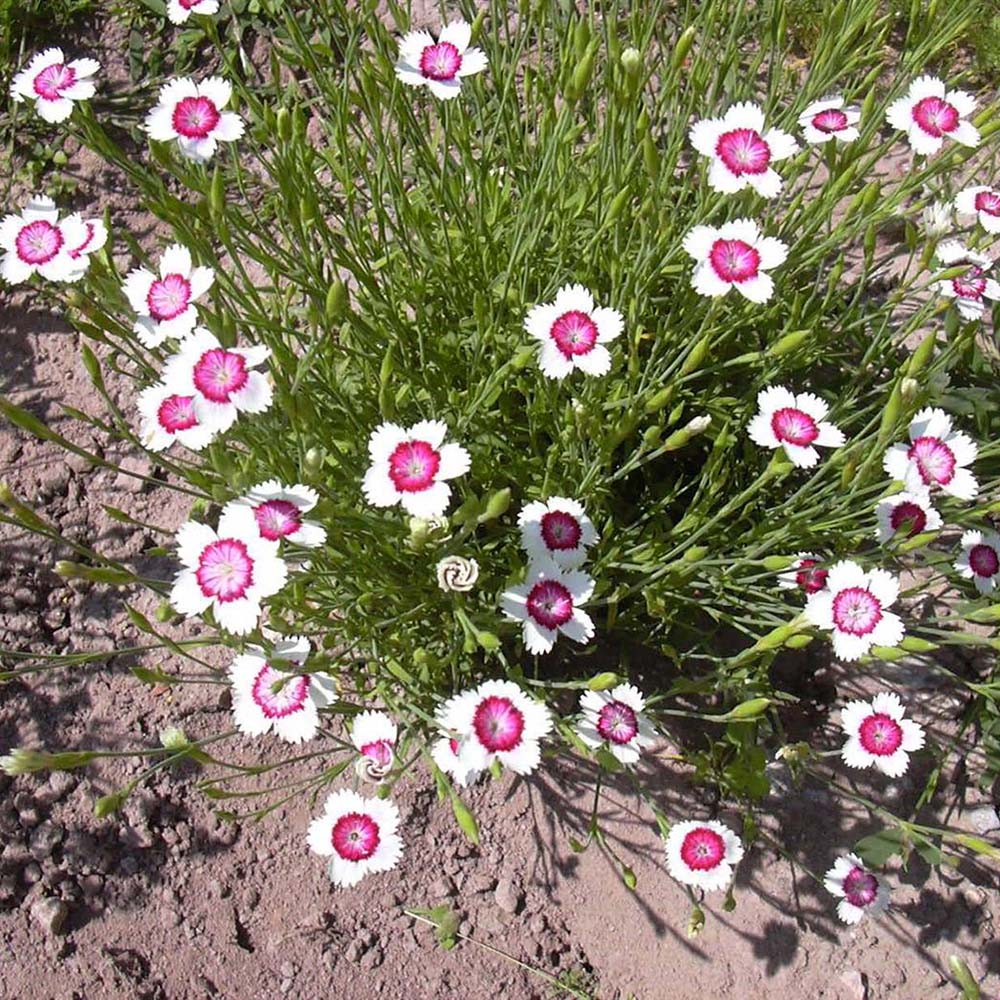
A frost-tolerant perennial from Siberia, enduring temperatures down to -35…-40°C, ideal for maiden pink cultivation in rock gardens and flower beds. It thrives on sandy soils, slopes, riverbanks, and forest clearings.
- Characteristics: Flower stalks reach 40 cm, densely covered with emerald leaves. Flowers (1.5–2 cm) have five serrated petals, white or pink, with a distinctive ring at the base. Blooms from June to September, benefiting from carnation mulching tips to retain moisture.
- Countries of Cultivation: Popular in Russia, Scandinavian countries (Sweden, Finland), Canada, Germany, and Ukraine. Widely used in cold-region carnation gardening.
- Seed Production: Major producers include Germany, Canada, the United States, and Russia. Suppliers like Jelitto Seeds focus on frost-tolerant carnation varieties.
Field Carnation (Dianthus campestris)
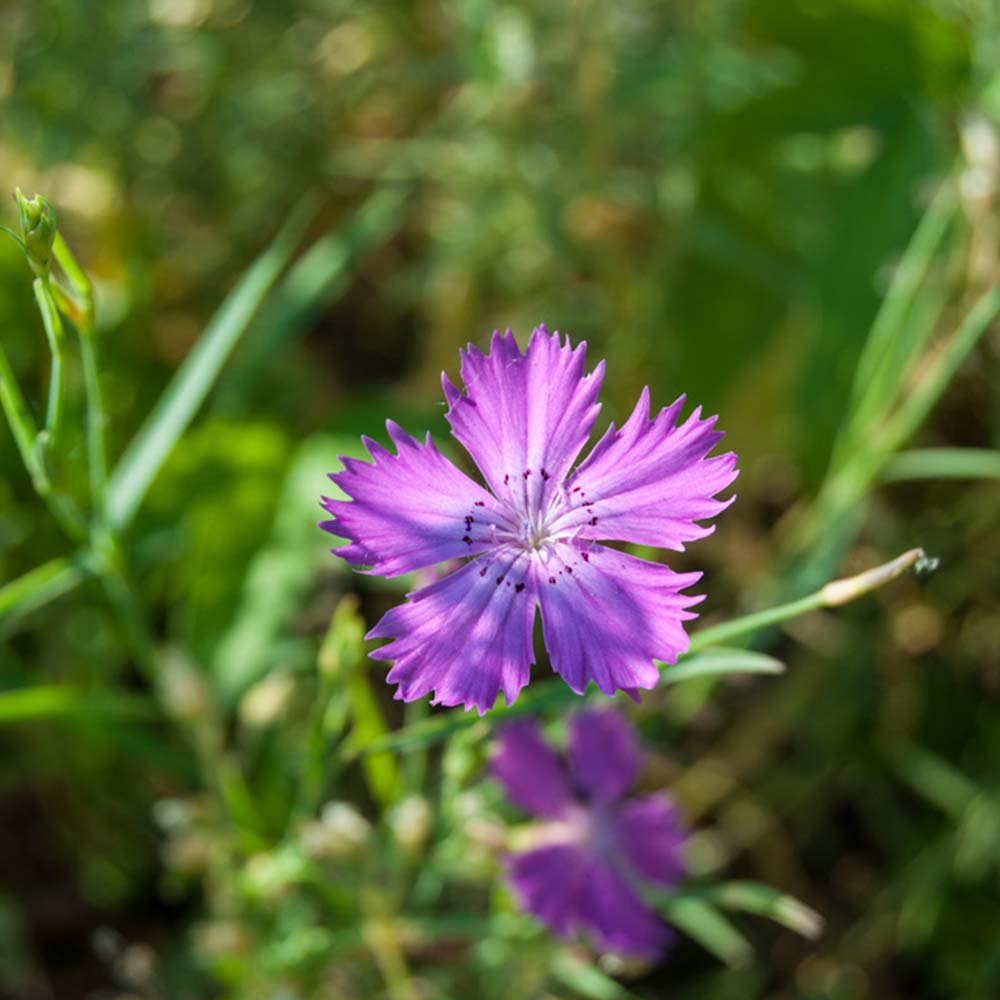
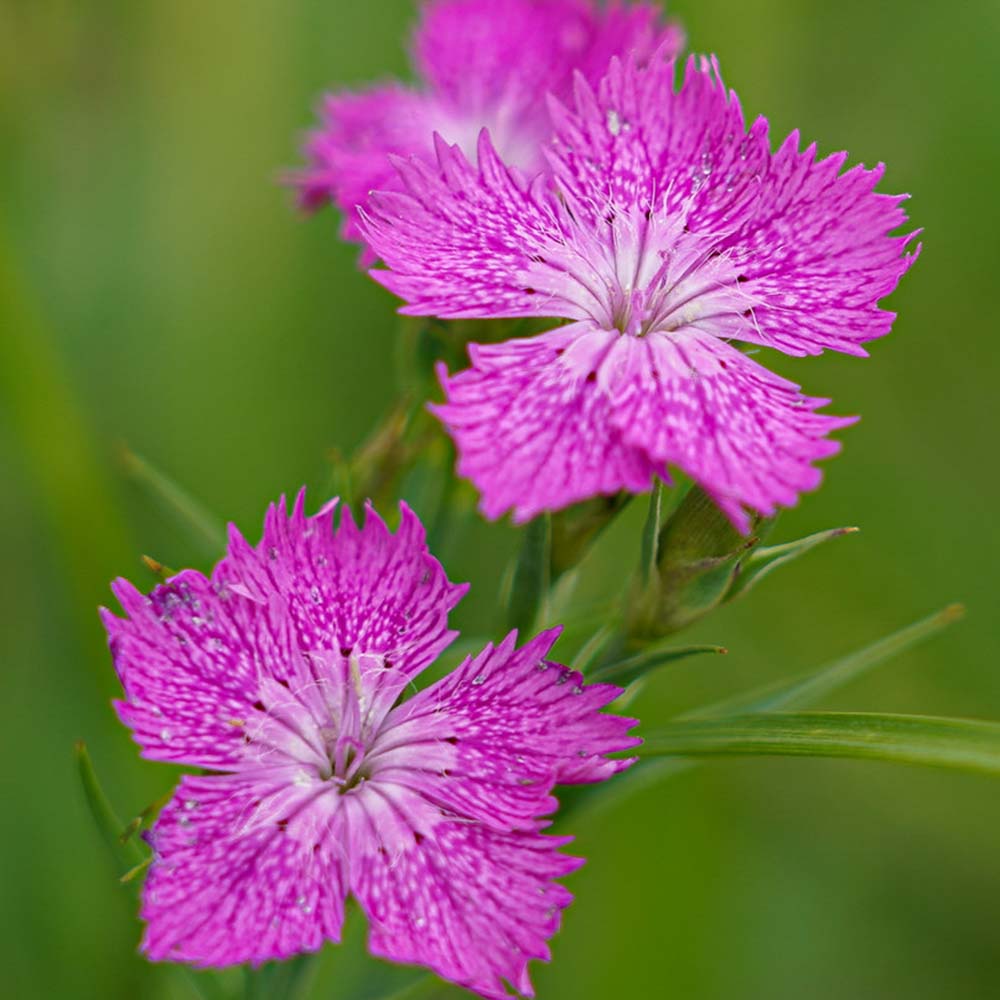
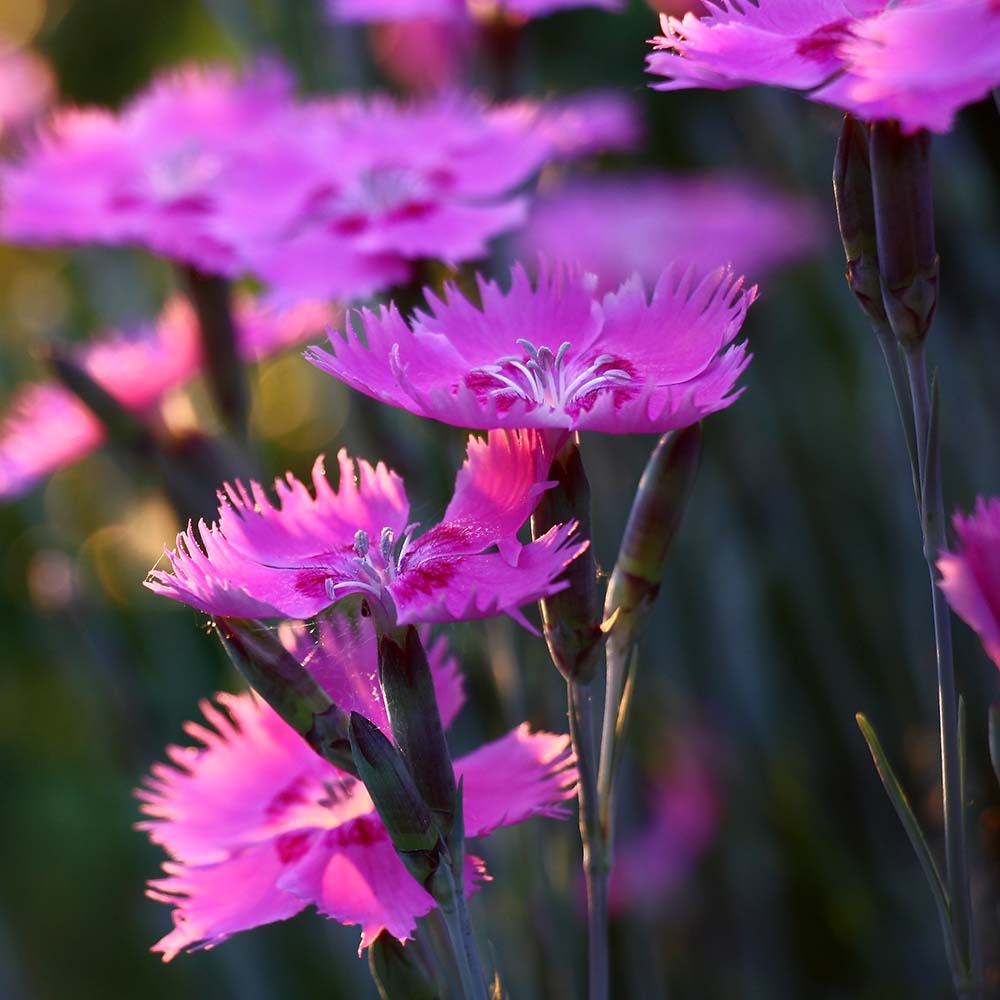
A creeping perennial from Central Europe and Asia, forming carpet-like growths, perfect for naturalistic field carnation planting with cornflowers and daisies.
- Characteristics: Stems reach 30–50 cm, with linear leaves. Flowers (1–2 cm) are pink-purple with greenish undersides, resembling small stars. Blooms from late June to August, supported by proper carnation fertilization.
- Countries of Cultivation: Grown in Poland, Hungary, Czech Republic, Ukraine, and Russia. Popular in Central European naturalistic gardens.
- Seed Production: Seeds are produced in Poland, Germany, and Ukraine. Local agribusinesses and European companies like Jelitto Seeds supply carnation seed germination materials.
Learn which other flowers are suitable for fall sowing in the article: ‘Autumn Sowing of Flowers for Your Garden’
Alpine Carnation (Dianthus alpinus)
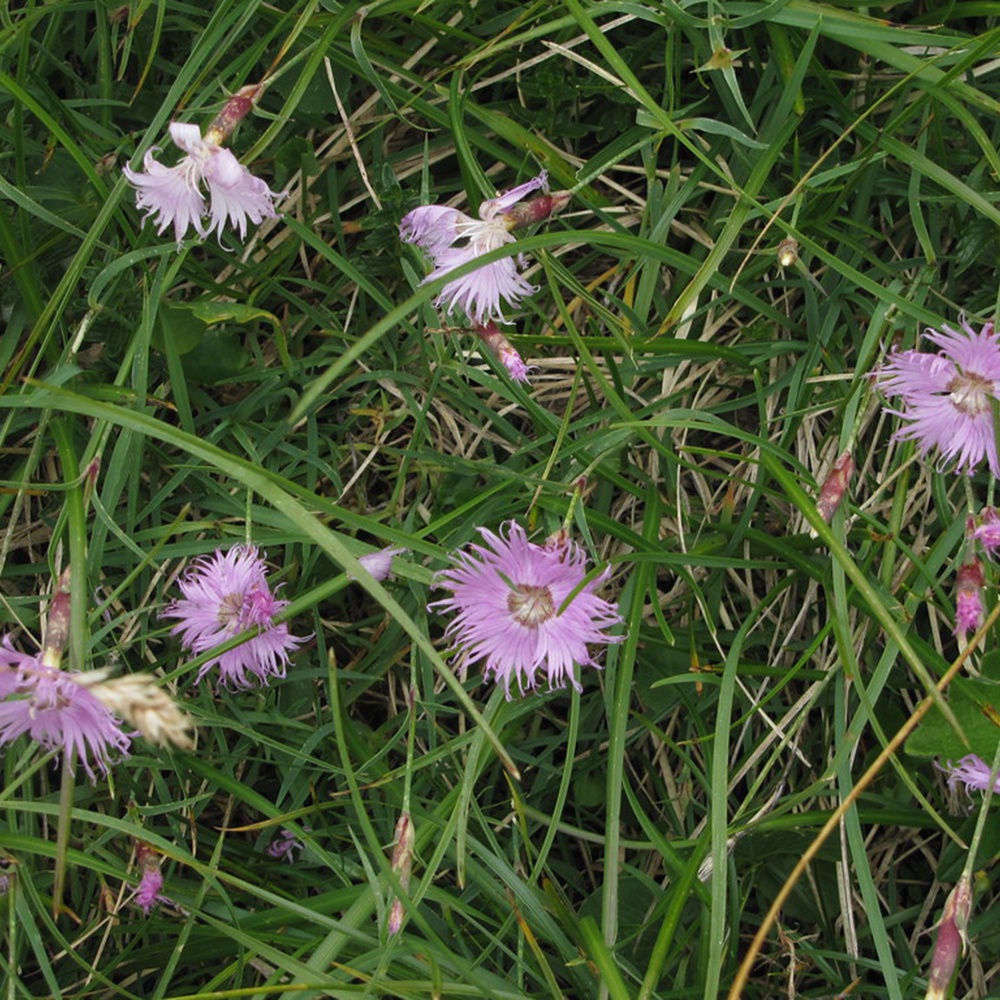
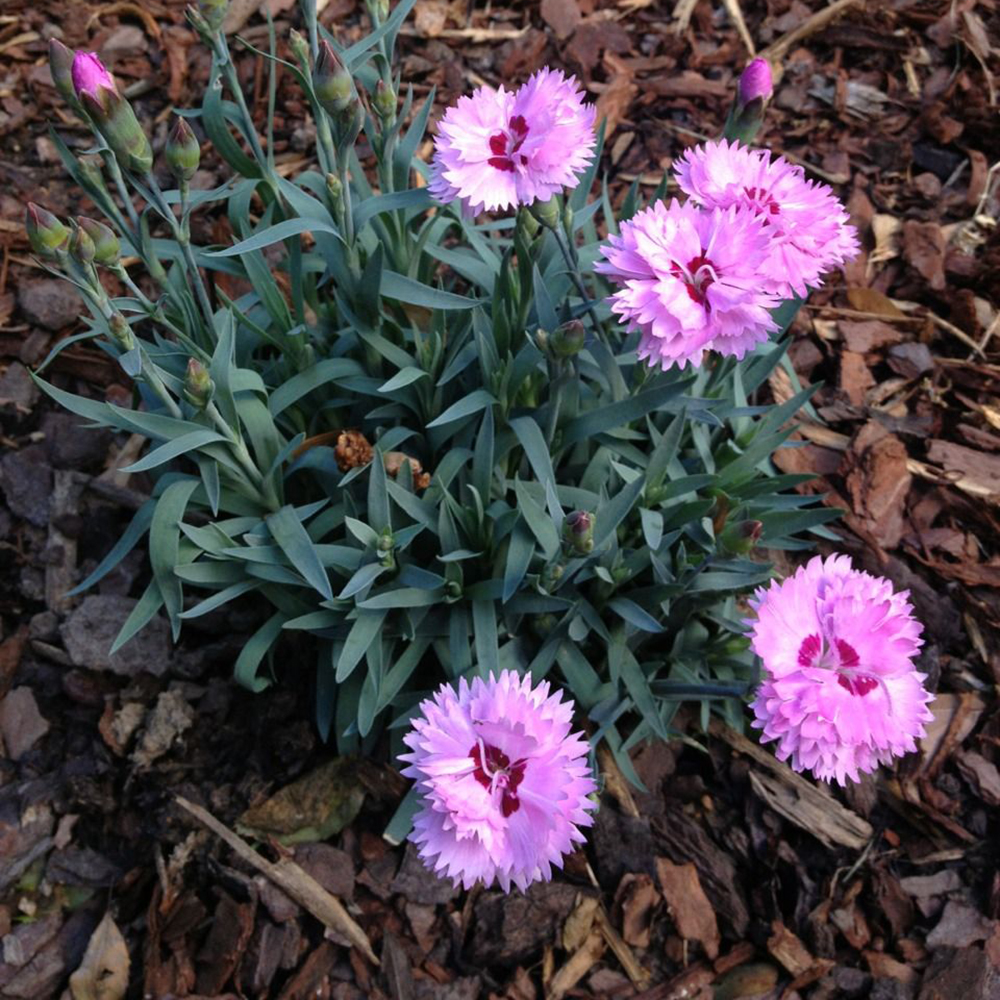
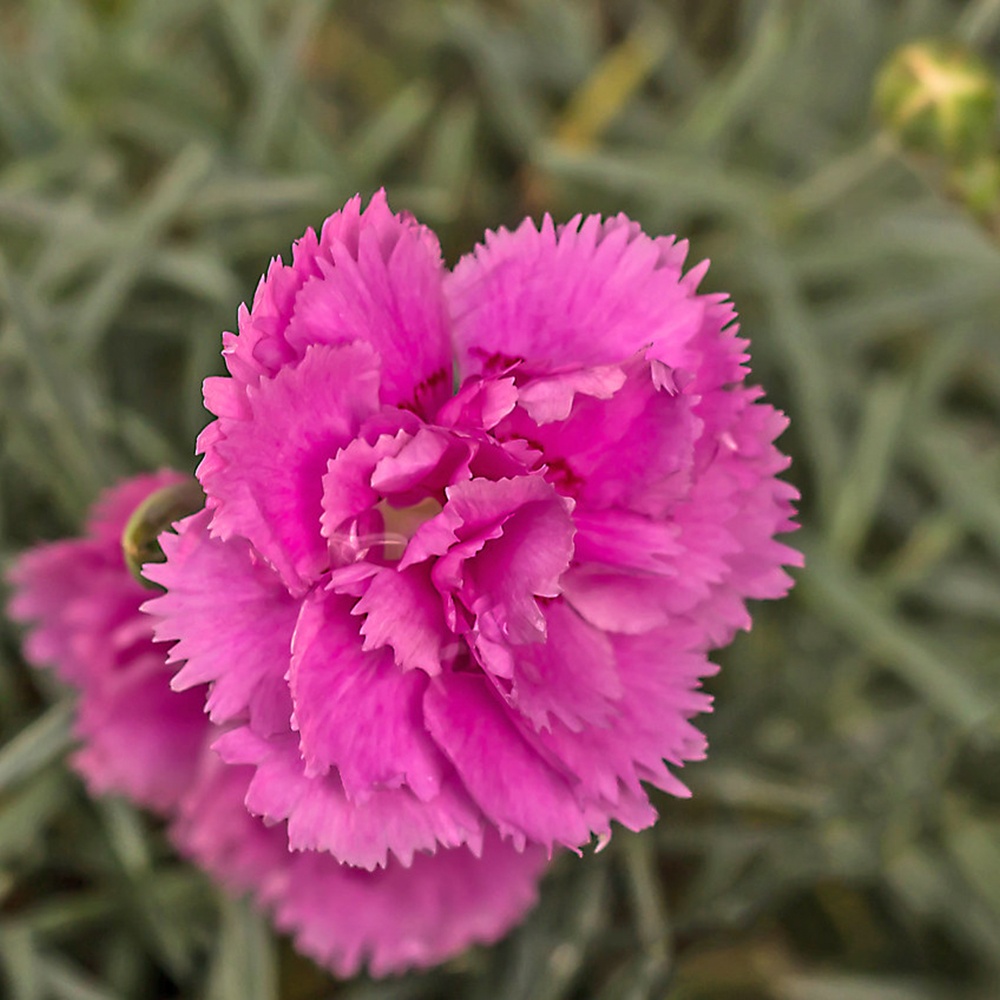
A mountain species from Italy, Slovenia, and Austria, thriving on limestone soils. Drought-tolerant, it requires sunny locations for optimal alpine carnation care.
- Characteristics: Thin, sprawling stems reach 15–25 cm. Blue-green leaves are hidden by lush inflorescences during blooming. Flowers (3–4 cm) are red-purple, fringed, with serrated edges. Blooms in June–July, enhanced by carnation pruning tips to maintain shape.
- Countries of Cultivation: Common in Italy, Austria, Switzerland, Germany, and the United States (in alpine gardens). In Ukraine, it is used in rockeries.
- Seed Production: Seeds are produced in Switzerland, Germany, and the United States. Companies like Benary and Jelitto Seeds offer carnation varieties for mountain gardens.
Global Cultivation and Seed Production Trends
- Leading Cultivation Countries: The Netherlands is the global hub for commercial carnation cultivation, particularly for garden and Chabaud varieties, due to advanced carnation greenhouse growing. Colombia and Kenya lead in cut flower exports. In Europe, carnations are popular in Italy, France, Poland, Germany, and Ukraine. In Asia, China and Japan dominate, while in North America, the United States and Canada are key producers. Organic carnation growing is gaining traction in these regions.
- Seed Production: Major suppliers of carnation seed germination materials include the Netherlands, Germany, the United States, France, and China. European companies (Syngenta Flowers, Jelitto Seeds, Benary) and American firms (Burpee, PanAmerican Seed) specialize in hybrids for ornamental and commercial carnation cultivation. Carnation pest control and carnation disease prevention are critical for maintaining seed quality.
If you have found a spelling error, please, notify us by selecting that text and pressing Ctrl+Enter.

